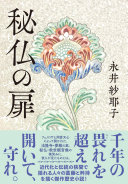| Languages |

Hibutsu No Tobira
Description:
A door that had remained tightly closed for 200 years. It was opened by the hands of Ernest Fenollosa and Okakura Tenshin. The statue of Guze Kannon in the Yumedono Hall of Horyuji Temple is said to have been carved in the Asuka period based on the image of Prince Shotoku. The shrine had been kept tightly closed since the Kamakura period, and it was believed that opening the door would result in immediate Buddhist punishment. "Are you revealing the hidden Buddha for money?" "Without support, Horyuji Temple will no longer survive." A storm of anti-Buddhist and anti-Shaku movements was raging in Japan, but in Europe and the United States, Eastern art was beginning to be appreciated. During the Meiji period, which wavered between modernization and tradition, what were the thoughts of those involved in the unveiling of the hidden Buddha? A masterpiece of a historical ensemble drama by a Naoki Prize-winning author
Temporarily out of stock – available within 30 to 40 business days
This item belongs to following categories:



